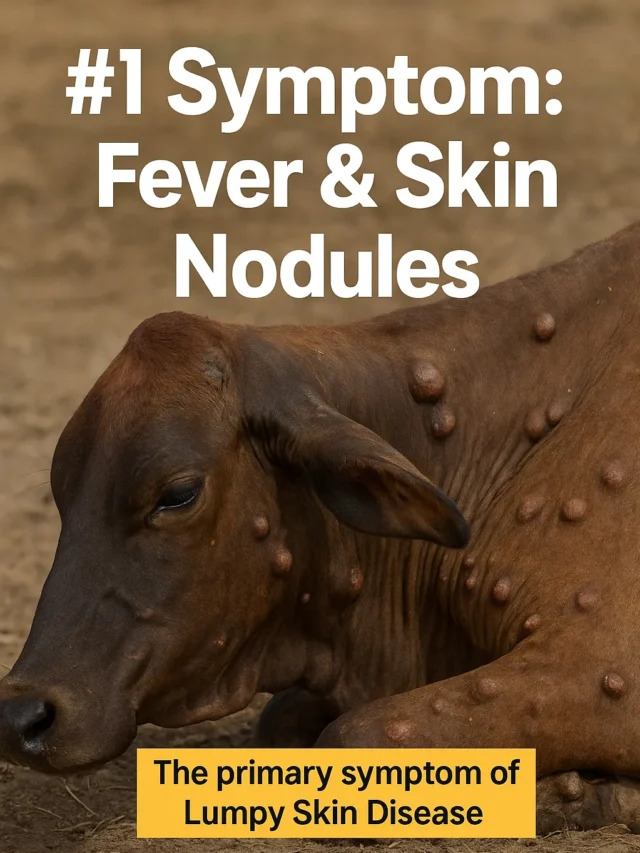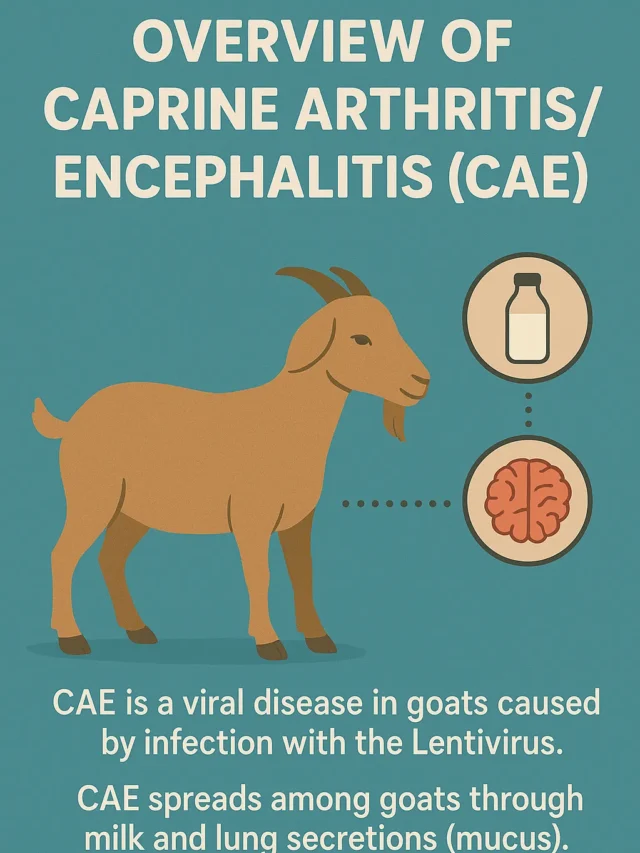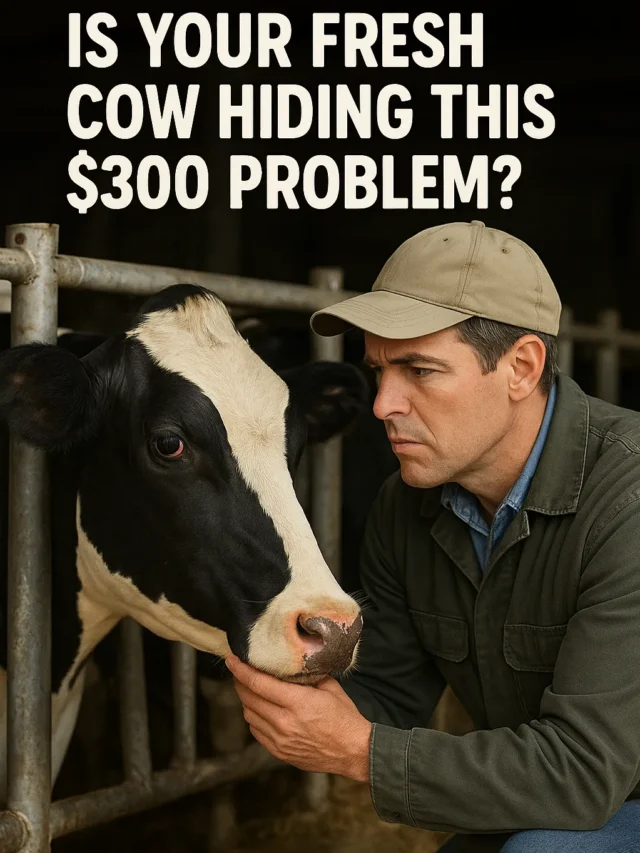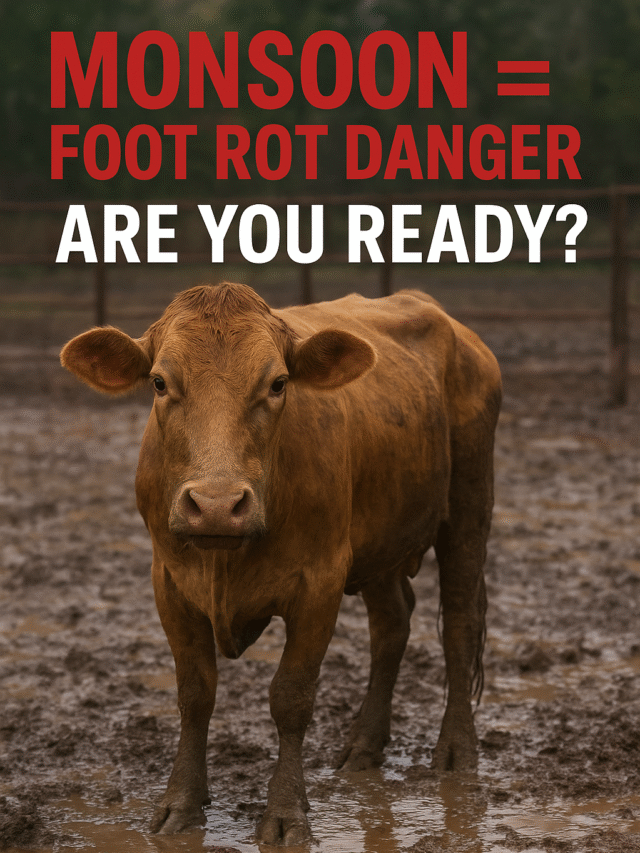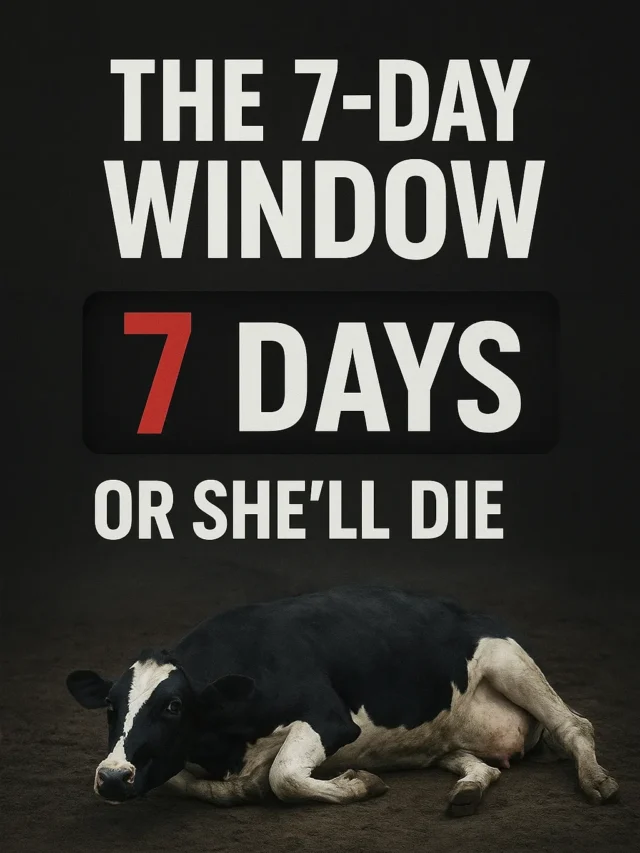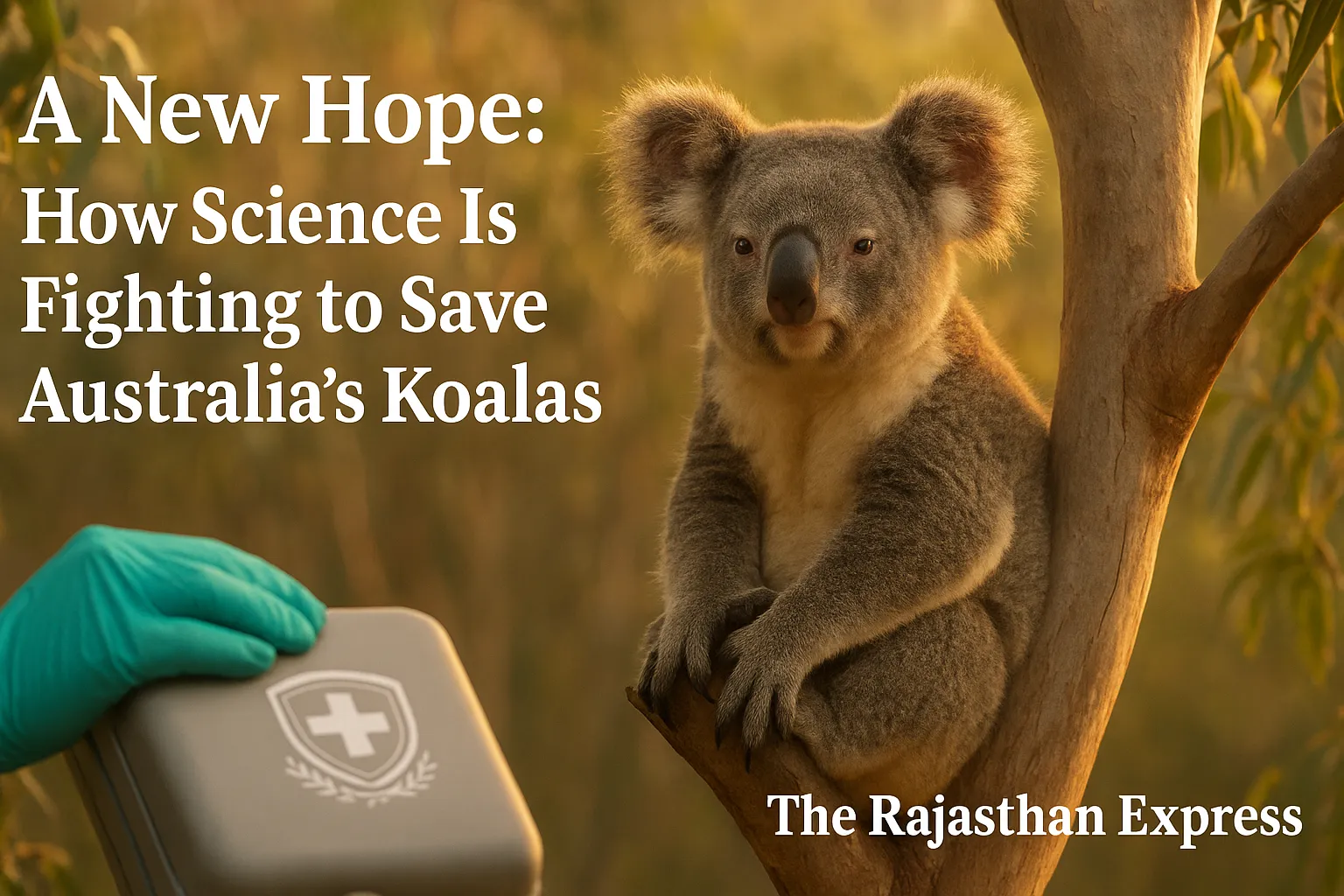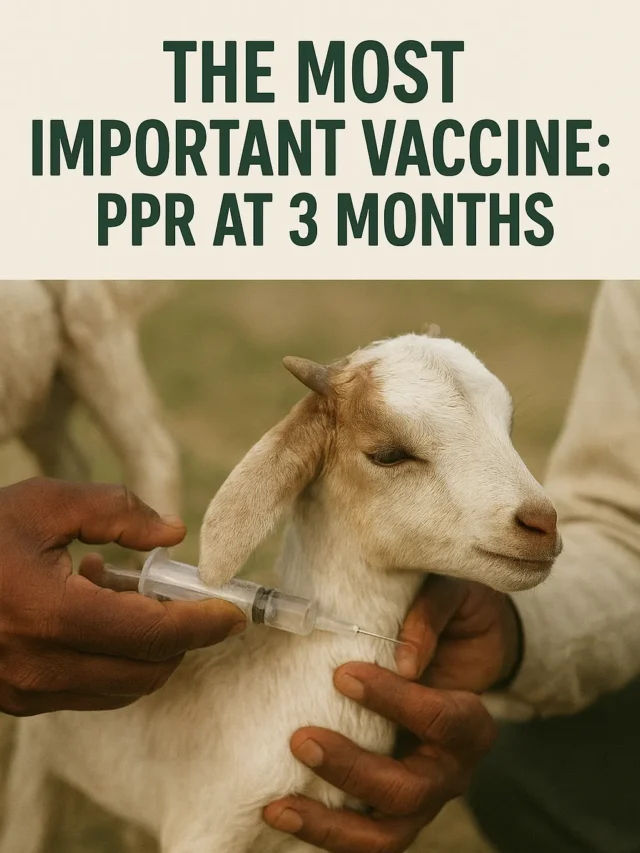A Scientific Triumph: World’s First Koala Chlamydia Vaccine Approved for Use
In a historic leap for global conservation, Australia has approved the world’s first vaccine against chlamydia for koalas. This scientific breakthrough, led by researchers at the University of the Sunshine Coast (UniSC), offers a critical weapon in the battle to save the nation’s iconic marsupial from a devastating epidemic that has pushed local populations toward the brink of extinction.
For over a decade, scientists have raced against time to develop a solution to the rampant spread of chlamydia, a disease that causes infertility, blindness, and death in koalas. With formal approval from the Australian Pesticides and Veterinary Medicines Authority (APVMA), this vaccine now transitions from a research project to a tangible, life-saving tool for wildlife veterinarians and conservationists across eastern Australia.
World’s First Koala Chlamydia Vaccine
| Approval Date | 21 September 2025 |
|---|---|
| Approved By | Australian Pesticides and Veterinary Medicines Authority (APVMA) |
| Developed By | University of the Sunshine Coast (UniSC), led by Prof. Peter Timms & Dr. Sam Phillips |
| Manufacturing Partner | Tréidlia Biovet (Australian-owned animal health company) |
| International Collaboration |
|
| Disease Target | Chlamydia pecorum infection in koalas – causes urinary infections, conjunctivitis, blindness, infertility, and death. |
| Current Impact |
|
| Previous Treatment Limitations |
|
| Vaccine Design |
|
| Trial Results |
|
| Rollout Plan |
|
| Conservation Impact |
|
| Sources: The Rajasthan Express; University of the Sunshine Coast; Australian Pesticides and Veterinary Medicines Authority; Australian Government Department of Climate Change, Energy, the Environment and Water; IUCN Red List. | |
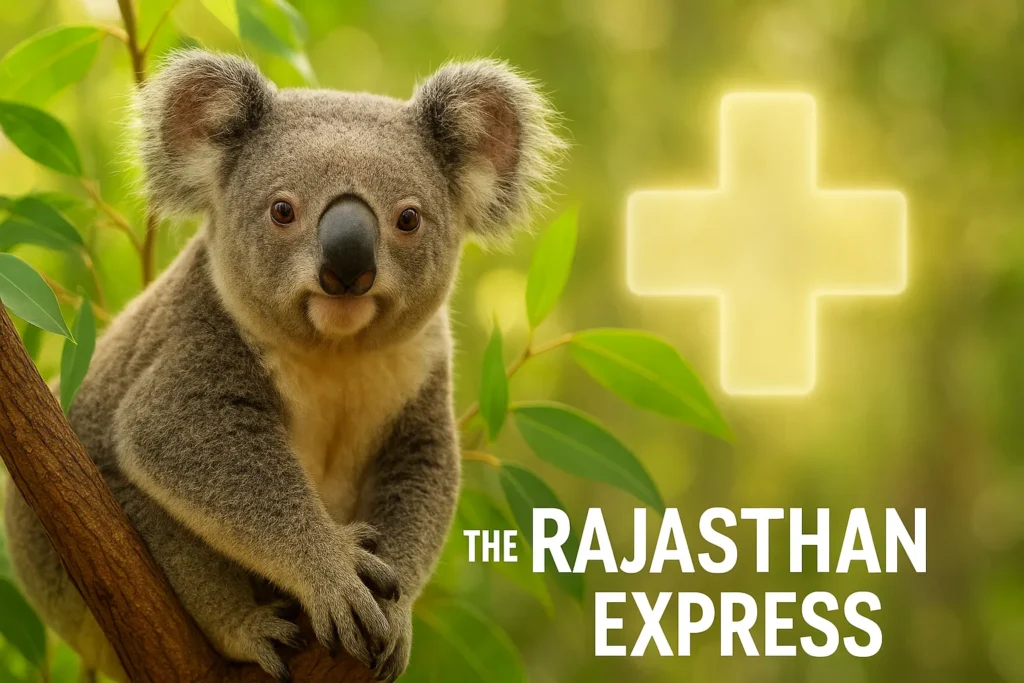
Global Veterinary Breakthroughs: India’s IVRI Vaccines and Australia’s Koala Conservation Effort
1 Introduction: A New Era in Veterinary Science
The year 2025 has witnessed remarkable advancements in veterinary science across the globe, with pioneering innovations emerging from both India and Australia that promise to transform animal conservation, livestock management, and disease control. These developments represent a significant leap forward in addressing some of the most pressing challenges in animal health and biodiversity conservation. While Australia celebrates the approval of a world-first chlamydia vaccine for its endangered koala populations, India has made groundbreaking strides with three novel vaccines and revolutionary reproductive technology developed by the Indian Veterinary Research Institute (IVRI). These parallel achievements underscore a shared global commitment to leveraging scientific innovation for wildlife conservation and sustainable agriculture, demonstrating how cutting-edge research can offer solutions to both ecological and economic challenges.
The synchronization of these breakthroughs across continents highlights an important trend in modern science: the convergence of expertise and resources toward solving complex problems that affect both animal and human populations. As nations grapple with biodiversity loss, climate change, and food security challenges, these veterinary innovations offer hope and demonstrate the critical role of scientific research in addressing global challenges. This article examines these recent developments in detail, exploring their technical specifications, potential impacts, and the broader implications for global health and conservation efforts, while placing them within the context of a growing international movement toward One Health approaches that recognize the interconnectedness of human, animal, and environmental health.
2 IVRI’s Revolutionary Vaccines: Technical Specifications and Impacts
The Indian Veterinary Research Institute (IVRI) has demonstrated exceptional scientific prowess through the development of three innovative vaccines that address critical challenges in livestock health management. These breakthroughs, launched during the 97th foundation day of the Indian Council of Agricultural Research (ICAR), represent significant milestones in India’s journey toward scientific self-reliance and sustainable agriculture. Each vaccine addresses a specific animal health concern with sophisticated technological solutions that place India at the forefront of veterinary innovation globally.tablet
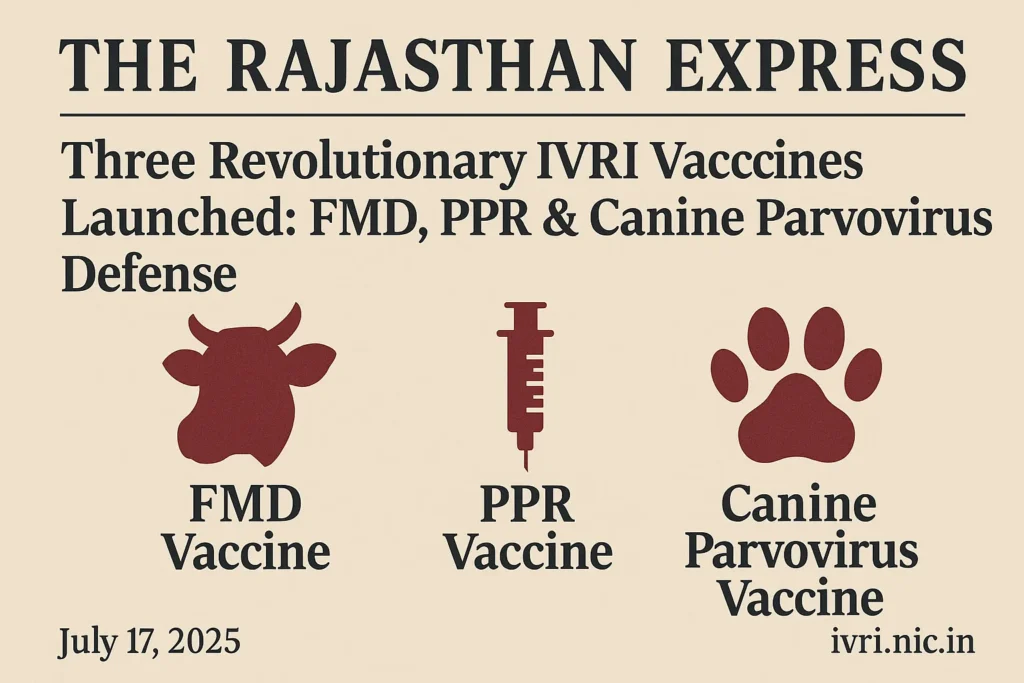
2.1 DIVA-enabled Trivalent FMD Vaccine
- Technological Innovation: The Foot-and-Mouth Disease (FMD) vaccine represents a world-first achievement in veterinary medicine. Its Differentiating Infected from Vaccinated Animals (DIVA) capability allows for clear distinction between animals that have been vaccinated and those that are infected, a crucial feature for disease surveillance and control programs. This differentiation is made possible through sophisticated molecular markers that identify immune responses specific to natural infection versus vaccination .
- Economic Impact: FMD has been responsible for annual economic losses exceeding ₹20,000 crore (approximately $2.4 billion) in India due to reduced milk production, weight loss, decreased draught power, and premature death of animals. This vaccine promises to significantly reduce these losses by enabling more effective disease management and control strategies, potentially transforming the economic landscape for India’s agricultural sector .
2.2 Recombinant PPR Marker Vaccine
- Technological Innovation: Designed to combat Peste des Petits Ruminants (PPR), commonly known as “goat plague,” this recombinant vaccine utilizes advanced genetic engineering techniques to create a marker vaccine that allows differentiation between infected and vaccinated animals. The technology involves the expression of specific antigens that stimulate protective immunity without causing disease.
- Global Alignment: The development of this vaccine directly supports the global initiative led by the Food and Agriculture Organization (FAO) and the World Organisation for Animal Health (OIE) to eradicate PPR by 2030. This positions India as a key contributor to global animal health initiatives and demonstrates the country’s capacity to develop solutions that address both domestic and international challenges .
2.3 Live Attenuated Canine Parvovirus Vaccine
- Technological Innovation: This vaccine is specifically developed from Indian dog breeds, making it particularly effective for the canine population in the country. The live attenuated platform provides robust immunity against a virus that causes severe gastrointestinal disease, dehydration, and often death in puppies and young dogs.
- Societal Impact: Beyond animal health, the vaccine addresses socio-economic concerns by reducing veterinary treatment costs for dog owners and animal welfare organizations. It also contributes to public health by minimizing the risk of parvovirus transmission through stray dog populations, thereby supporting broader community health initiatives .
| IVRI’s Revolutionary Vaccines and Their Key Features | |||
| Vaccine Name | Target Disease | Innovative Feature | Economic Impact |
|---|---|---|---|
| DIVA-enabled Trivalent FMD Vaccine | Foot-and-Mouth Disease | Differentiates infected from vaccinated animals | Reduces ₹20,000 crore annual losses |
| Recombinant PPR Marker Vaccine | Peste des Petits Ruminants (Goat Plague) | Recombinant technology with marker capability | Supports global 2030 eradication goal |
| Live Attenuated Canine Parvovirus Vaccine | Canine Parvovirus | Developed from Indian dog breeds | Reduces treatment costs and improves pet health |
| 👉 IVRI’s innovative vaccines help reduce economic losses, support eradication goals, and improve animal health. | |||
Read More About : Three Advanced Vaccines by IVRI Released on ICAR’s 97th Foundation Day
3 Cryopreservation Breakthrough: India’s First Cryopreserved Horse Foal
The National Equine Research Center (NRCE) in Bikaner has achieved a remarkable milestone in equine reproductive technology with the successful birth of India’s first cryopreserved horse foal, named Raj-Sheetal. This achievement represents a significant advancement in assisted reproductive technologies for equines in India and offers new possibilities for the preservation and propagation of valuable genetic material from indigenous horse breeds and mules. The technology involves preserving embryos at ultra-low temperatures (-196°C) using cryoprotectants to prevent ice crystal formation, then thawing and transferring them to recipient mares at a later date.
The significance of this breakthrough becomes particularly evident when viewed against the backdrop of the alarming decline in India’s equine population. The 2019 Livestock Census recorded a 45% decrease in the population of horses and ponies, highlighting the urgent need for effective conservation strategies for indigenous breeds such as the Marwari, Kathiawari, Manipuri, Spiti, and Zanskari. Cryopreservation technology offers a powerful tool to safeguard the genetic diversity of these breeds, which represent not only valuable biological resources but also important elements of India’s cultural heritage. By preserving genetic material from these breeds, scientists can ensure their survival even in the face of further population declines or catastrophic events.
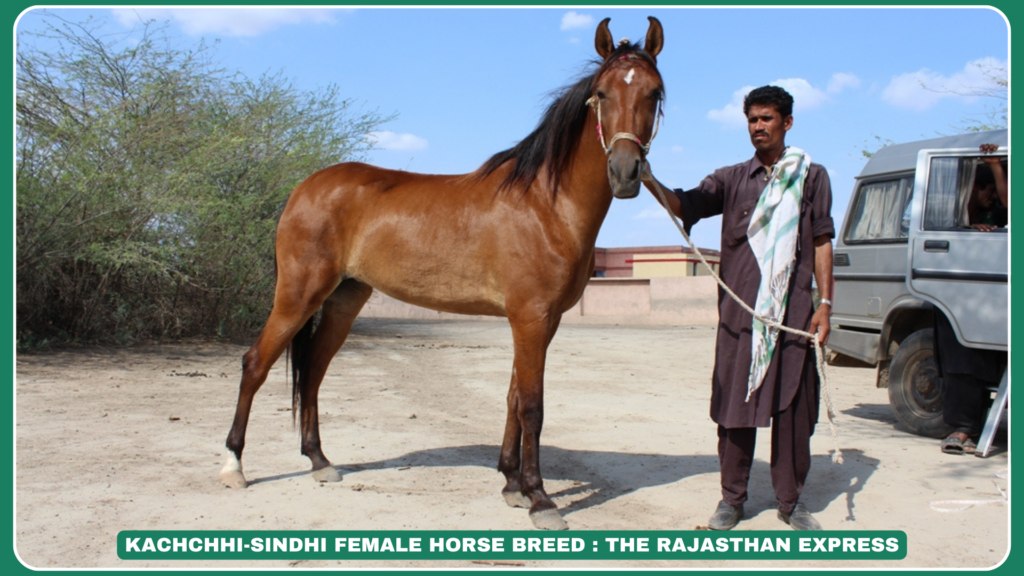
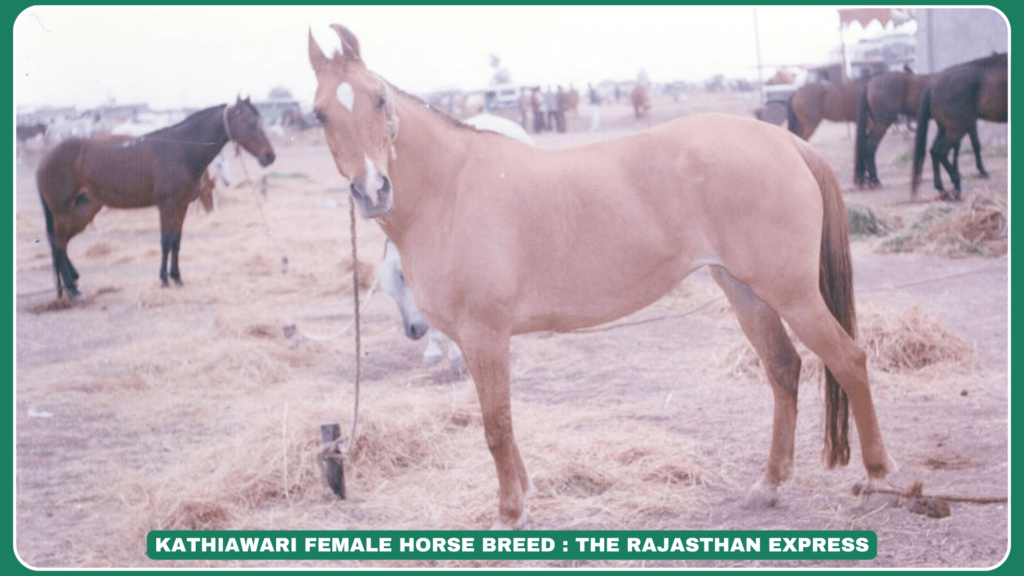
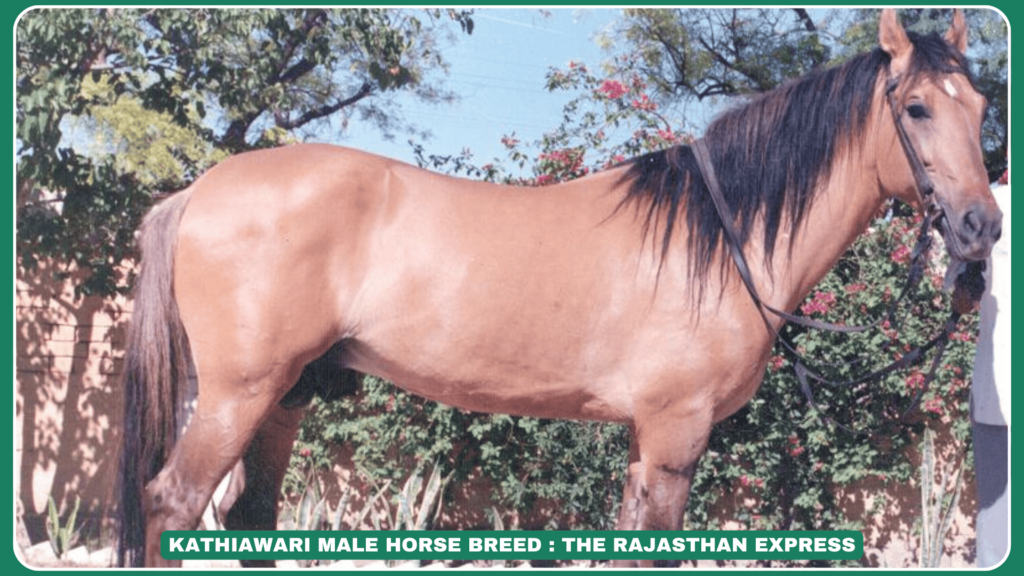
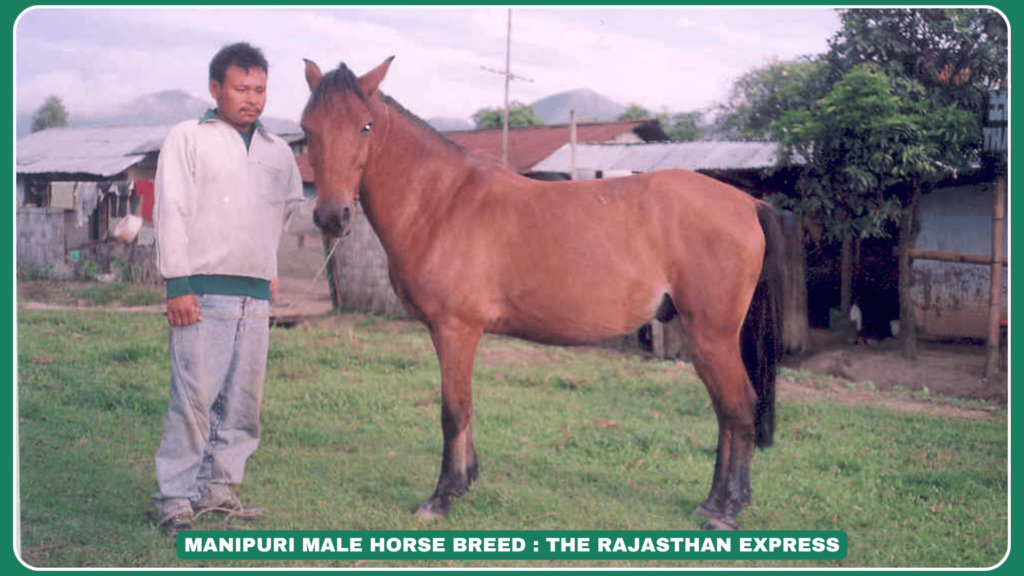
The successful application of this technology also has implications for sporting and conservation purposes. High-quality equines are essential for various traditional Indian sports and cultural activities, including polo and ceremonial events. Furthermore, the technology can be extended to endangered wild equids, contributing to broader biodiversity conservation efforts. The knowledge gained from this achievement positions India as a contributor to global equine conservation and reproductive science, with potential applications that extend beyond domestic species to include endangered wild equids around the world.
Read More About : India’s First Horse Foal Born Through Cryopreserved Embryo: The Birth of Raj-Sheetal
The Silent Epidemic: Understanding Chlamydia in Koalas
Chlamydia is one of the most severe threats to koala survival, alongside habitat destruction. Caused by the bacterium Chlamydia pecorum (a different strain from the human version), the disease spreads rapidly through populations via close contact and mating.
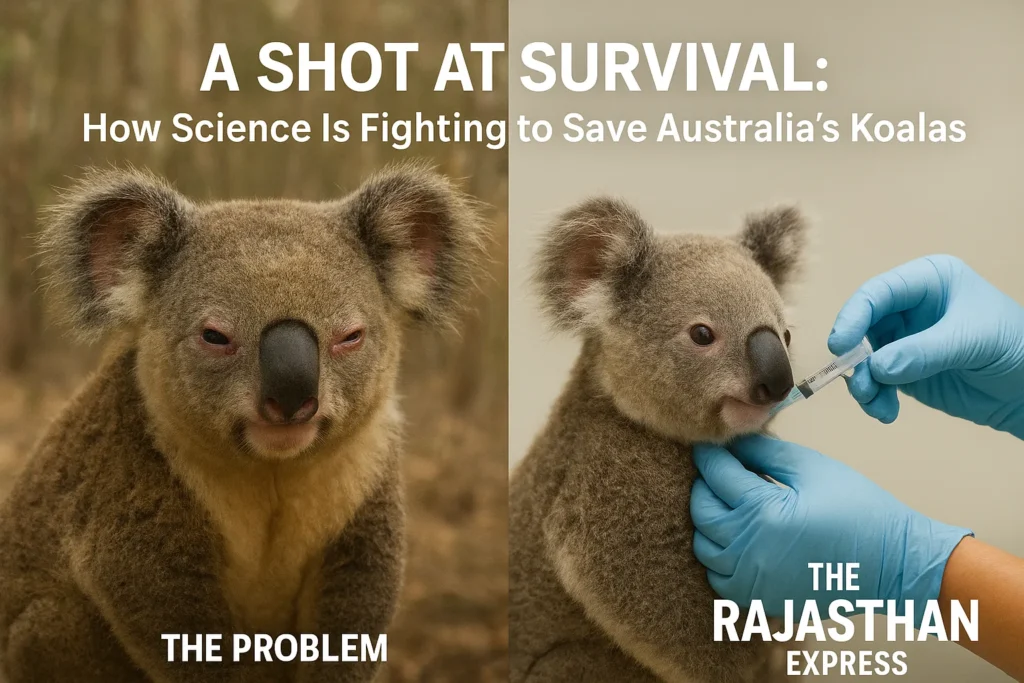
The Devastating Symptoms:
- Debilitating Pain: Koalas suffer from painful urinary tract infections and cystitis.
- Blindness: Severe conjunctivitis often leads to permanent blindness, preventing them from foraging and navigating trees.
- Infertility: The disease causes reproductive tract infections that render both male and female koalas infertile, crippling population recovery.
- High Mortality: For many, particularly in high-stress environments, the infections are fatal.
The situation is most critical in South East Queensland and New South Wales, where infection rates within some colonies soar as high as 70%. “Some individual wild colonies are edging closer to extinction every day,” warns Professor Peter Timms, the microbiologist who led the UniSC research team.
The Failure of Traditional Treatment
Until now, the only treatment was antibiotics. However, this approach is deeply flawed:
- Gut Microbiome Destruction: Antibiotics decimate the essential gut bacteria koalas need to digest their toxic, fibrous diet of eucalyptus leaves, often leading to starvation.
- High Failure Rate: Antibiotics frequently fail to clear the infection permanently, leading to relapse and ongoing suffering.
The Breakthrough: Inside the Single-Dose Koala Vaccine
This new koala chlamydia vaccine is a marvel of scientific precision designed specifically for the challenges of wildlife treatment.
A Decade of Rigorous Research
The vaccine’s approval is built on a foundation of extensive clinical data gathered through multiple trials led by UniSC Senior Researcher Dr. Sam Phillips. This includes the largest and longest-ever study of wild koalas, which confirmed the vaccine’s safety and efficacy.
The study’s key finding: The vaccine reduced mortality from chlamydia in wild populations by at least 65% and significantly reduced the onset of disease symptoms during a koala’s prime breeding years.
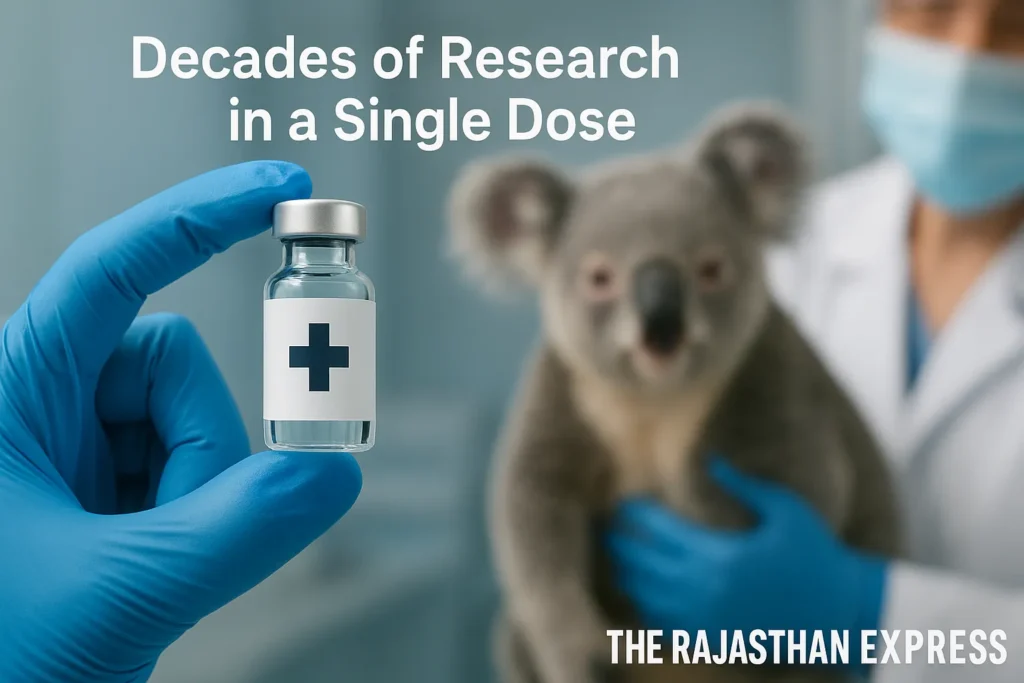
Vaccine Science
Vaccine: A vaccine is a substance administered to develop active immunity in the body against infectious diseases. Its primary goal is to prepare the body’s immune system so that an individual or animal can remain protected from specific diseases.
History of the Word “Vaccine”: The word “vaccine” was first coined by Edward Jenner. The first vaccine developed was the smallpox vaccine, created by Edward Jenner in 1796 from the cowpox virus. This vaccine was used to protect humans from smallpox. The term “vaccine” is derived from the word “Vaccinia Virus,” which refers to the cowpox virus.
General Science of Vaccines: Most vaccines contain antigens, which are given in an inactive form.
“You can read our detailed guides on the complete poultry vaccination schedule for chickens and broilers and the vaccination schedule for sheep and goats at →
- Poultry Vaccination Schedule: Complete Vaccine Guide
- Sheep and Goat Vaccination Schedule: Complete Vaccine Guide
How the Vaccine Works: A Triple-Layer of Protection
The vaccine is ingeniously designed around Chlamydia pecorum’s major outer membrane protein (MOMP). It provides three critical levels of defense:
- Reduces Infection: Helps prevent koalas from contracting the disease.
- Prevents Disease Pvaccinerogression: Stops mild infections from developing into severe, clinical illness.
- Reverses Symptoms: In some cases, it can even reverse existing symptoms of the disease.
The Genius of the Single-Shot Design
A key feature of this koala vaccine is that it requires only a single dose.
- “We’ve purposely developed a vaccine that only requires one shot, and for a wild animal like koalas, that is what you really need,” explains Professor Timms.
- This eliminates the need to recapture koalas for booster shots, minimizing stress on the animals and making large-scale field operations logistically feasible.
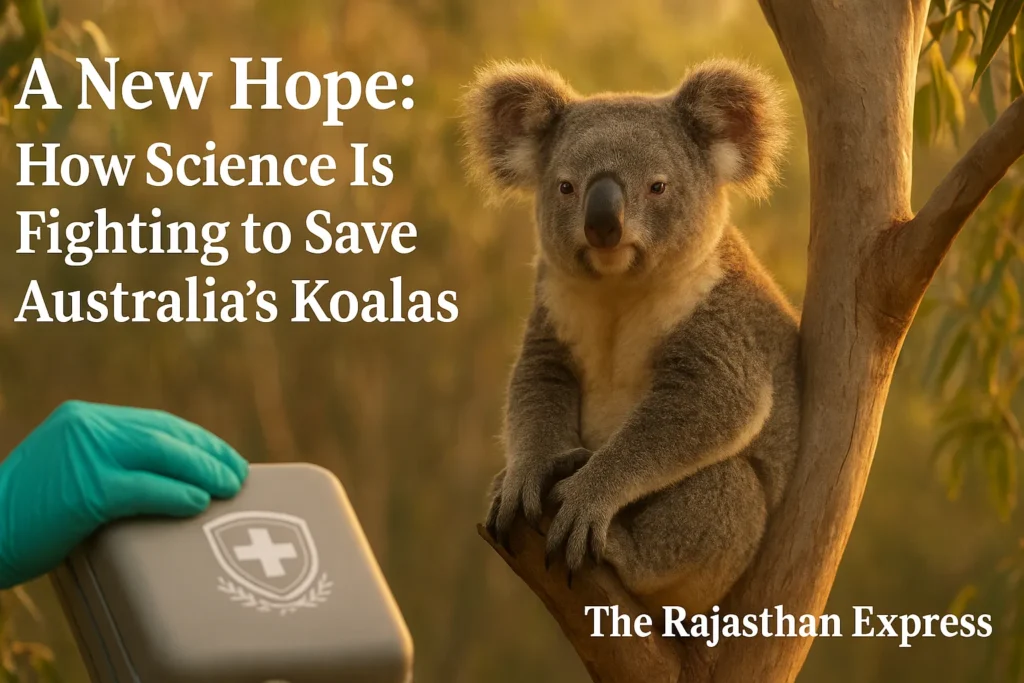
From Lab to Wild: The Collaborative Path to Approval
This achievement was not made in isolation. It is the result of an unprecedented global and national collaboration dedicated to koala conservation.
- Manufacturing Partner: Australian-owned animal health company Tréidlia Biovet will produce the vaccine.
- International Expertise: A crucial adjuvant was developed with support from the University of Saskatchewan’s VIDO and funding from the Bill and Melinda Gates Foundation.
- Field Trials & Veterinary Partners: Wildlife hospitals, including the Australia Zoo Wildlife Hospital and the Port Macquarie Koala Hospital, were instrumental in trialing the vaccine in real-world conditions.
- Government Support: Federal, NSW, and Queensland governments provided funding and regulatory support, recognizing the vaccine as a national priority.
Dr. Terri Irwin of Australia Zoo noted, “These trials involved vaccinating koalas in real-world conditions, enabling researchers to gather valuable data… Together, we are turning the tide for koalas.”
The Road Ahead: Funding a National Rollout
With regulatory approval secured, the next challenge is scaling up. The mission now is to secure significant funding and donations for a national rollout.
The goal is to distribute the vaccine widely to:
- Wildlife Hospitals and Vet Clinics: Treating incoming sick and injured koalas.
- Field Conservation Teams: Deploying the vaccine directly to vulnerable wild populations identified as high-risk.
- Rehabilitation Centers: Ensuring koalas are protected before being released back into the wild.
Every contribution will directly fund vaccinations, directly impacting the survival of this iconic species.
A Pivotal Moment in Koala Conservation
While this vaccine is not a silver bullet—habitat loss remains a critical threat—it is a game-changing intervention. It directly addresses one of the leading causes of koala mortality and infertility.
By dramatically improving individual animal welfare and boosting population growth rates, this vaccine provides a crucial buffer against extinction. It is a powerful testament to what collaborative, determined science can achieve and offers a tangible hope that the distinctive call of the koala will continue to echo through Australian forests for generations to come.
Source By : World’s First Koala Chlamydia Vaccine Approved for Use




Australian researchers gain approval for a groundbreaking single-dose vaccine against koala chlamydia, a disease devastating wild populations. Discover the science & how it saves koalas.
THE RAJASTHAN EXPRESS
